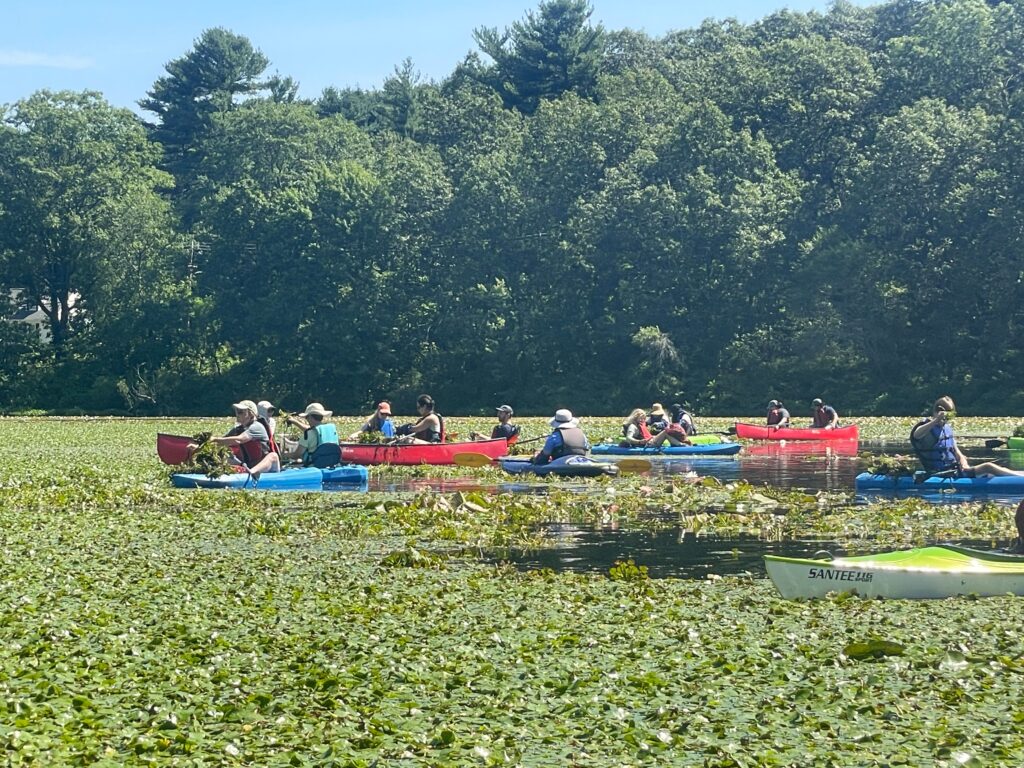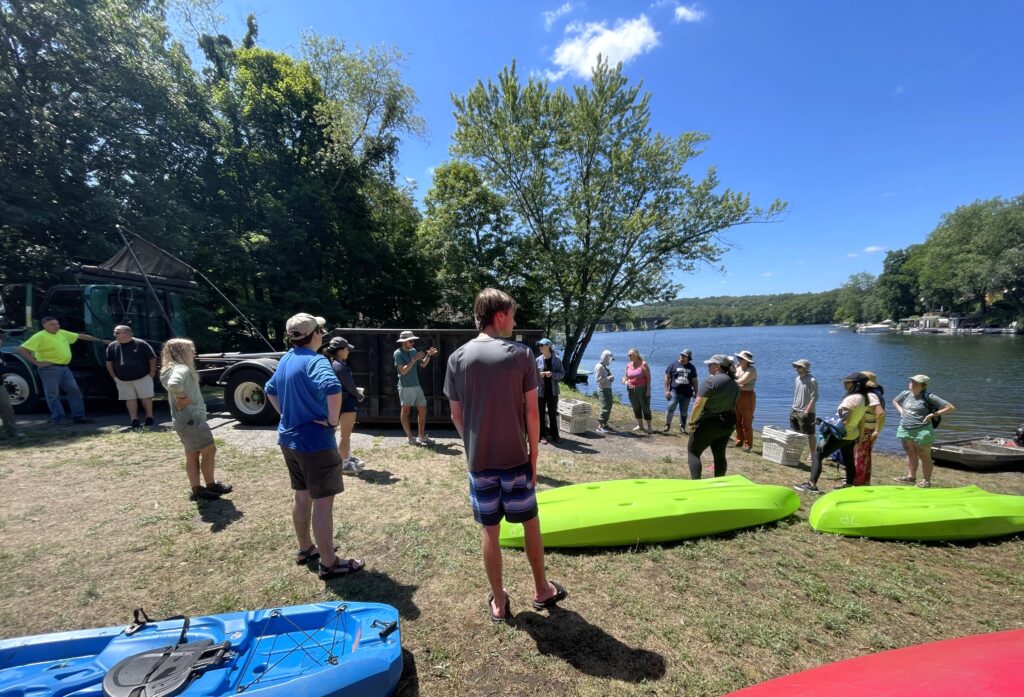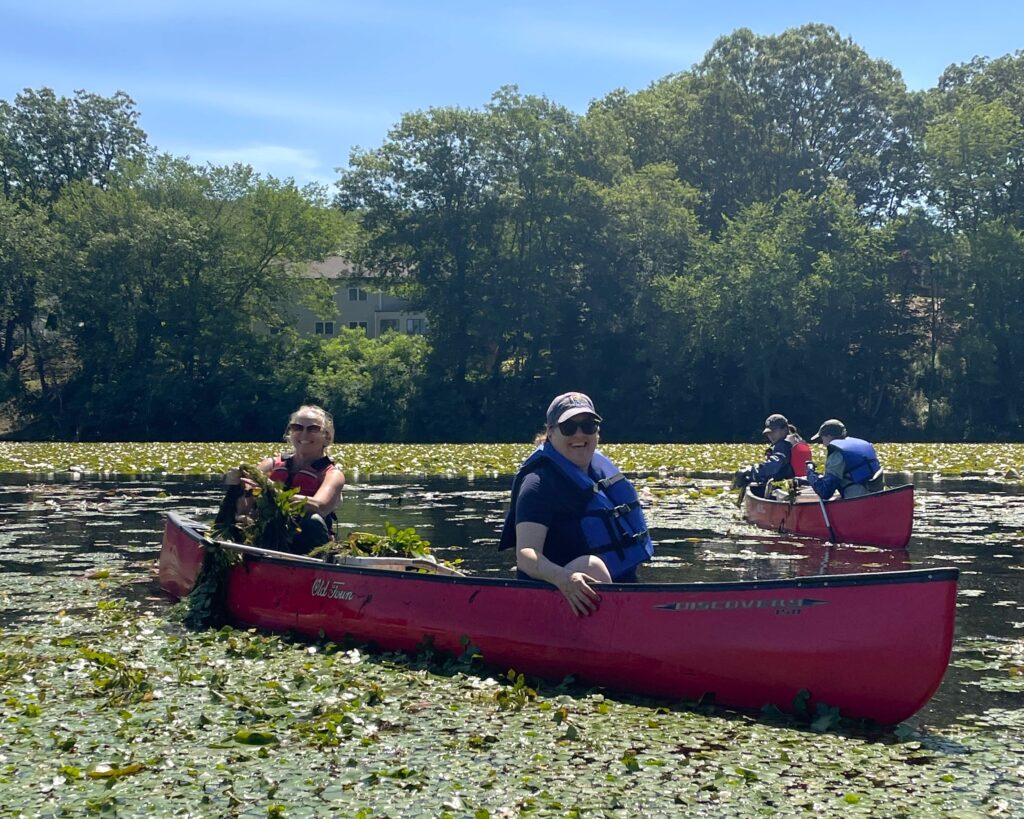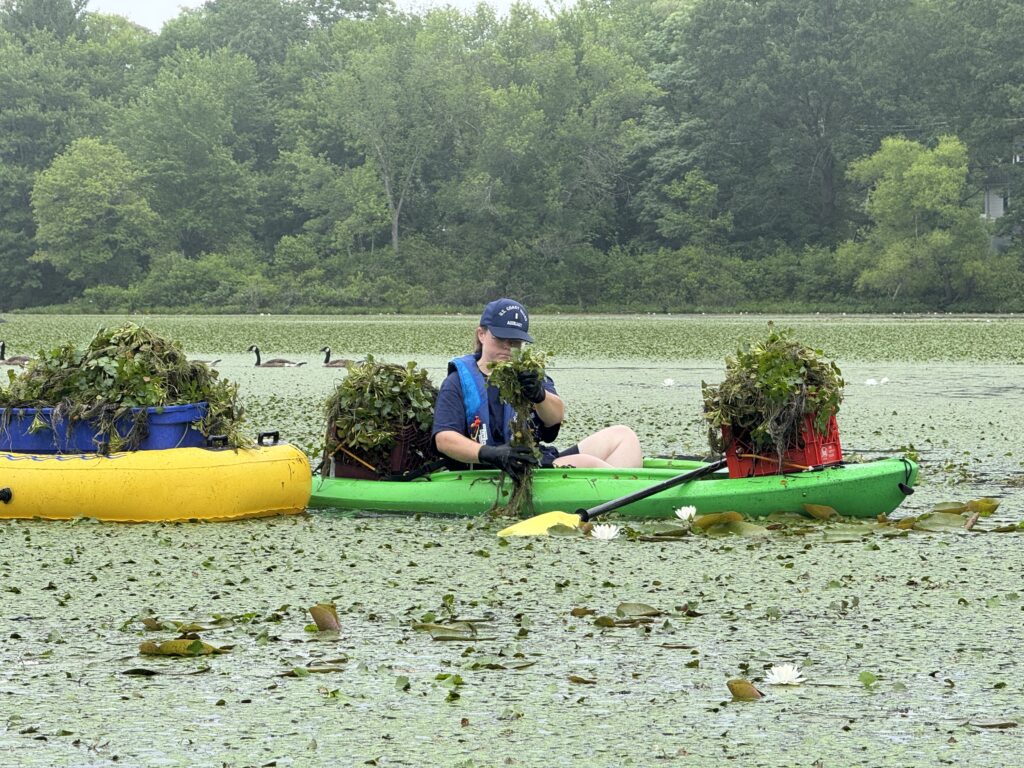This past spring and summer, community volunteers helped remove water chestnut, an aquatic invasive plant, from waterbodies in Rhode Island and southern Massachusetts. Working by boat across 16 events, a total of 256 community members hand-pulled an estimated 23 cubic yards, totaling approximately 6,505 pounds of plant material. These efforts are part of a water chestnut management grant funded by Restore Americas Estuaries and the Southeast New England Program that focuses on the Blackstone and Ten Mile Watersheds.

Water chestnut (Trapa natans) overtakes slow-moving waterways, lakes and ponds by forming dense floating mats that impede boating and other recreational activities. Additionally, the invasive plant impacts the ecosystem by shading out native flora, depleting dissolved oxygen levels, and altering fish habitat. When left unmanaged, water chestnuts can grow exponentially, and seed beds can remain viable for up to twelve years – making a sustained, multi-year management effort a necessity.
NEIWPCC collaborated with partners in Rhode Island and Massachusetts to oversee the planning and organizing of the events, in which volunteers logged a total of 1,574 hours. The Rhode Island volunteer events were based at the Slatersville Reservoir in North Smithfield, and Valley Falls Pond and Carl’s Pond in Cumberland. Community members also gathered at Lake Quinsigamond in Shrewsbury and Coes Reservoir in Worcester, Massachusetts. This work was in partnership with the Blackstone River Tourism Council, the Blackstone Watershed Collaborative, the Friends of the Blackstone, the Lake Quinsigamond Watershed Council, and the city of Worcester, Massachusetts.


In addition to supporting the hand-pulling events, NEIWPCC also distributed educational signage in both English and Spanish to raise public awareness of the invasive plant. Over the next year, NEIWPCC plans to develop management materials to assist local nonprofits and governments in organizing community-driven water chestnut pulling events.

